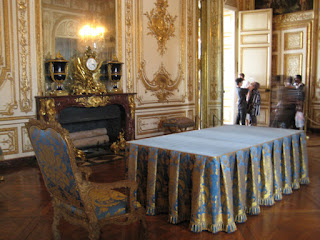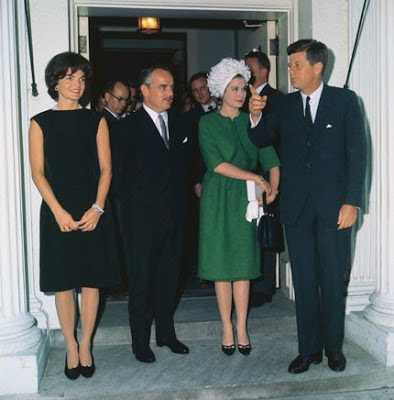It will come as no surprise to those kind souls who’ve
followed this blog for any amount of time (or anyone who knows me for even a
little while) that I have a contrary nature.
As I child, I eschewed girly stories for pirate stories. I was crazy for Raphael Sabatini (who authored Seahawk, Captain Blood, Scaramouche).
Instead of cartoons I watched Errol Flynn movies.
I loved the swordplay, the horses, the adventure and the style
that I’d found in those movies and my favorite books as a kid had the most
gorgeous color plates illustrated by people like NC Wyeth, Howard Pyle,
Maxfield Parrish and Mead Shaeffer that had been my mother’s when she was a
child. I found them digging around in
the parental bookcases one lucky day and they changed my life. I fell in love with color.
The art director (Carl Jules Weyl) who did Flynn’s Adventures of Robin Hood used the color palette that
Wyeth had used in his book illustrations –– rich, saturated Technicolors ––
colors of imagination, how could he not? Unlike the bland
colors of the day-to-day world, these were colors of romance and adventure ––
not the world as it was but the world as it should be.
When Mead Shaeffer (1898-1980) painted The Three Musketeers artwork
he pulled out all the stops (and saturated all the colors) as did Alexandre
Dumas when he wrote the tale, based on a story that he found in the Marseille library. The story captured his imagination so
completely that he never returned the book – the Marseille library kept Dumas’
never redeemed withdrawal card at the library as a treasure.
Mémoires de M. d'Artagnan was written by Gatien de Courtilz de Sandras
(published in 1700, 27 years after the death of D’Artagnan). Like many great adventure stories, Gatien’s
tale was secondhand –– it came his way during a prison stay –– told to him
by a warden who had been a friend of the real D’Artagnan. After all, Thomas Mallory wrote his Arthurian legend, Le Morte d’Arthur while serving time
in the Tower ––
something about jail lets some imaginations soar –– the colors of imagination
can transform even a prison, but are especially potent in the fertile mind of a
child.
All those yards of silks, those velvets and brocades, those
jewels, those bare shoulders, those ringlets, those men in the wonderful boots
and those fabulous feathered hats (so perfect for doffing) –– the middle of the
17th century was a time of sensual extravagance. Look at the gowns from the 1650’s and 60’s –– demure white to bird-of-paradise colors ––
the saturated colors of romance and adventure:
Personal items were terribly luxurious during the Baroque
period –– even the cases were divine:
The knives and forks were masterfully decorated.
The furniture was over the top as was the some of the art
and architecture
V & A collections, Pier Table 1690
V & A collections, Cabinet on stand 1690
V & A collections, portrait miniature, possibly of Mmme.
De Montespan 1690
And the rooms were gilded within an inch of their lives:
So you would imagine the denizens of this world of excess and
luxury would eat well, wouldn’t you? And
you’d be right.

François Pierre de la Varenne
When I began my series on sauces HERE,
I knew I wanted to make Sauce Robert –– a sauce with a rich history that
stretched back for centuries.
It was a sauce that was so well-known that it made its way into
literature, mentioned in Rabelais’ Pantagruel as well as in a remarkably
amusing play bursting with fine food entitled La Condemnacion de Banquet from 1507 that has an exchange that
involves Sauce Robert (not unusual since the whole thing is about food) as it
waxes eloquent on sauces and dishes to delight:
Madame honnorée,
Veez-en cy de trop plus parfaictes,
Que cyve, ne galimaffré:
Tout premier, vous sera donnée,
Saulce Robert, et cameline,
Le saupiquet, la cretonne,
La haricot, la salemine,
Le blanc manger, la galantine,
Le grave sentant comme basme,
Boussac, monté avec dodine
Caulhurner, et saulce madame
Even further back there is a mention of it (but no recipe) in the
mother of all French cookbooks, Taillevant‘s 1310-95) Le Viandier . A 1583
cookbook said to make Sauce Barbe Robert, one should:
“Take small onions fried in lard (or butter according to the day),
verjuice, vinegar, mustard, Small spices [grains of paradise, cloves and long
pepper] and salt. Boil everything
together.”
“But ask for the Sauce Robert at clubs or restaurants, whether in Paris
or London: it is impossible to recognize it in the liquid which is now served
under its name. Yet great chefs cannot
rest content with the simplicity of the old receipt. They glory in high art and all the wonders of
science; and they have improved upon the sauce until its fine gusto is lost in
a weak civilization. The Sauce Robert
was bountiful in its onions –– indeed, illimitable. In the sauce of the modern Boulevards, the
quantity is reduced; onions are not polite enough –– and sometimes they are
intermingled with chopped gherkins. In
the Sauce Robert there was not thought of wine or ketchup, nor any thought of
vinegar beyond the little tarragon vinegar involved in French mustard…. If they
want a Sauce Robert, they surely ought to get it in the simplicity of the old
receipt, which is perfect in its way.”
A masterful full history of sauce Robert can be found at Peter
Hertzmann’s blog, a la carte HERE.
I wanted to try the old version and found a recipe for a Pork Loin with Sauce Robert in La Varenne. This was my idea of a perfect use for the sauce and I had beautiful Berkshire pork tenderloins from my friends at D’Artagnan for the dish. Seems only good and right that the D’Artagnan company has a role in this dish since it was inspired by The Three Musketeers (Unus pro omnibus, omnes pro uno – one for all, all for one!). They always have what you need to make great meals from this century or any other.
I took the liberty of adding a bit of fat, since the tenderloin
has none. I liked the idea of a combination of butter and pork fat (as the 1583
recipe suggested) and the result was superb. Also, since the roasting method
would produce more juices on a whole loin, I added some demi-glace to get
the rich flavor the original would have had and reduced it to a chutney consistency –– you can reduce it less if you would like. The original would have had more fat and might have been more liquid. This would be great with pork chops and sausages as well –– you may want to double the recipe and save some because it is that good.
Loin of Pork with
a sauce Robert
Lard it with great lard, then roast it, and baste it with verjuice and
vinegar, and a bundle of sage. After the
fat is fallen, take for to fry an onion with, which being fried, you shall put
under the loin with the sauce wherewith you have basted it. All being a little stoved [stewed or heated] together,
lest it may harden, serve. This sauce is
called sauce Robert.


Pork Tenderloin with Sauce Robert, serves 4
2 pork tenderloins (Get D’Artagnans HERE)
1 T lard or butter (you could use more fat to be more like the original - perhaps 1/4 c)
1 large onion chopped
½ t salt and ½ t pepper*
pinch ground cloves
2 Small bunches sage leaves
½ c demi-glace from D'Atagnan HERE
2 T grainy mustard
Heat the butter in a skillet and add the onions and one of the sage
bunches. Cook at low heat for about ½ an
hour till soft and sweet.
Preheat oven to 425º
Put the lard or butter in the
heated pan, salt and pepper the tenderloins and put in the skillet and brown
the meat over high heat for a minute or 2 on each side. Put them in the
oven for 10 -15 minutes or until the internal temperature is 145º. Remove
from the oven and tent while you finish the sauce.
Remove the sage, add the verjuice
and vinegar and begin reducing over medium low heat. Add the demi-glace
and stir till you have a thick sauce. Pour any juices from the pan (after
removing excess fat) and pour any accumulated juices from the plate into the
sauce. Add the salt and pepper and cloves.
Taste for seasoning and then add the mustard. Serve with the sliced tenderloin garnished
with the rest of the sage.
* originally long peppers and grains of paradise would be used… they
are great so use them if you have them –– they have grains of paradise at Whole
Foods





,_Duchess_of_Cleveland_by_John_Michael_Wright.jpg)




















 )?
)? 





















